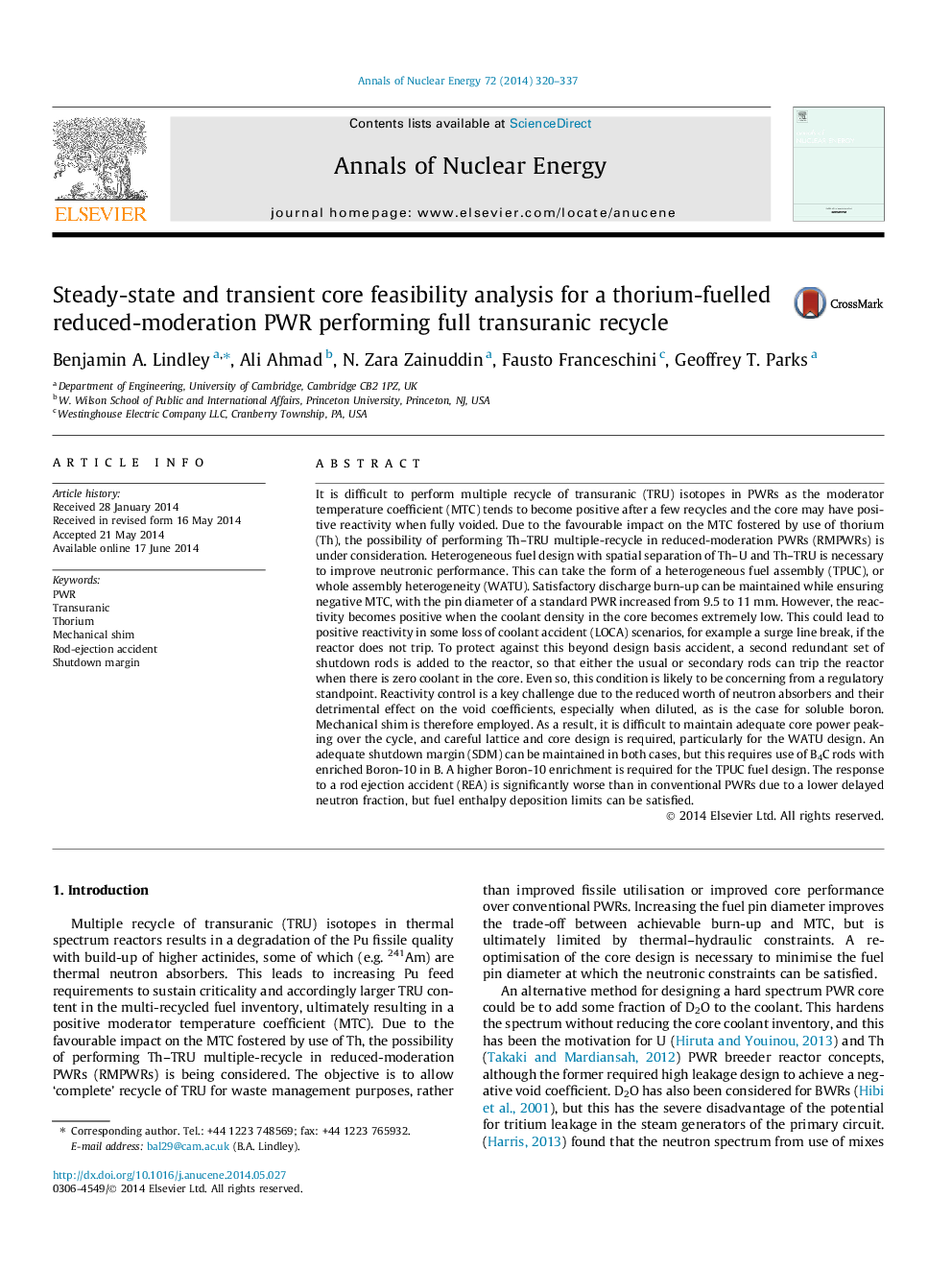| کد مقاله | کد نشریه | سال انتشار | مقاله انگلیسی | نسخه تمام متن |
|---|---|---|---|---|
| 1728142 | 1521126 | 2014 | 18 صفحه PDF | دانلود رایگان |

• We present a core analysis for a thorium-transuranic fuelled reduced-moderation PWR.
• There is the possibility of positive reactivity in severe large break LOCAs.
• Mechanical shim is used to control reactivity within power peaking constraints.
• Adequate shutdown margin can be achieved with B4C control rods are required.
• The response to a rod ejection accident is within likely licensing limits.
It is difficult to perform multiple recycle of transuranic (TRU) isotopes in PWRs as the moderator temperature coefficient (MTC) tends to become positive after a few recycles and the core may have positive reactivity when fully voided. Due to the favourable impact on the MTC fostered by use of thorium (Th), the possibility of performing Th–TRU multiple-recycle in reduced-moderation PWRs (RMPWRs) is under consideration. Heterogeneous fuel design with spatial separation of Th–U and Th–TRU is necessary to improve neutronic performance. This can take the form of a heterogeneous fuel assembly (TPUC), or whole assembly heterogeneity (WATU). Satisfactory discharge burn-up can be maintained while ensuring negative MTC, with the pin diameter of a standard PWR increased from 9.5 to 11 mm. However, the reactivity becomes positive when the coolant density in the core becomes extremely low. This could lead to positive reactivity in some loss of coolant accident (LOCA) scenarios, for example a surge line break, if the reactor does not trip. To protect against this beyond design basis accident, a second redundant set of shutdown rods is added to the reactor, so that either the usual or secondary rods can trip the reactor when there is zero coolant in the core. Even so, this condition is likely to be concerning from a regulatory standpoint. Reactivity control is a key challenge due to the reduced worth of neutron absorbers and their detrimental effect on the void coefficients, especially when diluted, as is the case for soluble boron. Mechanical shim is therefore employed. As a result, it is difficult to maintain adequate core power peaking over the cycle, and careful lattice and core design is required, particularly for the WATU design. An adequate shutdown margin (SDM) can be maintained in both cases, but this requires use of B4C rods with enriched Boron-10 in B. A higher Boron-10 enrichment is required for the TPUC fuel design. The response to a rod ejection accident (REA) is significantly worse than in conventional PWRs due to a lower delayed neutron fraction, but fuel enthalpy deposition limits can be satisfied.
Journal: Annals of Nuclear Energy - Volume 72, October 2014, Pages 320–337